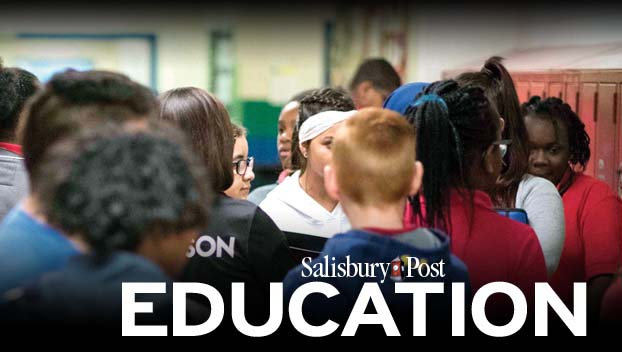RSS school board approves $207.6 million initial budget, discusses federal aid
Published 12:10 am Wednesday, September 15, 2021
SALISBURY — The Rowan-Salisbury Schools Board of Education on Monday approved an initial budget resolution to administer $207.6 million in anticipated revenues from state and local sources and expenses.
The budget is the initial document for the 2021-2022 fiscal year and will be revised as necessary over the course of the year until a final resolution is presented in June 2022. State funding in the budget is based on the number of students attending RSS schools, a metric called average daily membership (ADM).
The current formula is based on an ADM of 18,402, but the district’s real ADM at the 10-day mark was 17,934. During the previous year, public schools were held harmless for changes in their ADM because of the pandemic.
Chief Financial Officer Carol Herndon told the board the ADM has crept up since the 10-day mark. There also is a push in the state legislature to hold districts harmless for the figure a second year in a row. Otherwise, RSS could be forced to return some funding to the state.
Herndon noted $416,000 in new expenditures within local funding because of increases in salaries and benefits as well as a decrease in current expense funding from Rowan County of almost $500,000.
As a result, the district projects about $1 million will be needed from its fund balance, which is used like a savings account, to make ends meet in the local budget. Herndon said the district is “appropriately conservative” in its local budget estimates, projecting about $1 million in fund balance appropriation every year. It rarely has to appropriate that funding by the end of the year, she said.
Board member Travis Allen asked about the reason for the decrease from the county. Herndon said the district did not receive specific feedback, but she noted increases in capital funding and funding for the district’s new K-8 project. The district’s capital outlay budget, which excludes major projects such as the Knox-Overton K-8, totals $3.5 million.
“I’m guessing that maybe that had something to do with it,” Herndon said.
The capital funding for the K-8 project was appropriated for the district two years ago. Part of the funding was spent on HVAC upgrades for schools throughout the district, but the remaining funds were frozen during the early days of the COVID-19 pandemic.
Herndon told the board she believes it is important the district resume meeting with the Rowan County Board of Commissioners in person to make the case for its needs.
“We need the chance to present what’s best for our children,” Herndon said, adding the board was on track to do that in 2020 before the pandemic hit.
Board member Dean Hunter agreed the board should be presenting directly to the county.
“Half a million dollars is significant,” Hunter said, adding the district’s employees are underpaid and losing that funding takes away from the ability to have conversations about pay increases.
Discussion returned to finances later in the meeting when the board brought up federal relief money. In total, the district has received about $70 million since the beginning of the pandemic.
Herndon walked the board through funding percentages and noted the district has already spent the $4 million from the first round of federal relief.
Herndon said RSS recognizes additional duties staff are taking on during the pandemic, including covering classes or filling in for employees who are out of work due to quarantine. She said the district can fund additional work in response to COVID-19, but it has to make decisions about what not to fund because RSS already created a budget for the remaining money. The finance and federal programs staff are working on that idea now.
The state won’t allow using the federal dollars to simply fund bonuses, she said.
Herndon also said RSS Federal Programs Director Jerri Hunt has good contacts who are honest about what would expose it to federal audits and paybacks it cannot afford.
Herndon said there is more federal money coming, but the amount is unclear.
Brian Hightower asked about funding that would be used for capital improvements to boost air quality, including if the district can build something with the money, including larger weight rooms.
Herndon said the guidance has been clear on air quality improvements. Chief Operations Officer Anthony Vann told the board the more than $30 million of funding the district will spend on air quality improvements such as HVAC systems and air exchanges will be taken off the top of the more than $200 million in capital needs within the district.
Vann said the goal is to have fresh air in every classroom.
In other agenda items:
• The board approved $4.4 million in set-aside funding for Title I programs. Funding is reserved for those programs every year and applies to schools where at least 40% of students receive free or reduced lunch.
• The board approved spending $6,500 to purchase 550 iPad tablets with cellular connectivity. The purchase will replace some outmoded mobile hotspots. The cost is low because it is mostly funded through the federal Emergency Connectivity Fund. The board opted to not purchase new cases for each device, which would have brought the cost up to $39,017, instead advising case purchases should be made on an as-needed basis.
• The board received a presentation on results from the district’s expanded summer school. Students generally showed some growth from the beginning to the end of summer programs and the board agreed it was a net positive.







